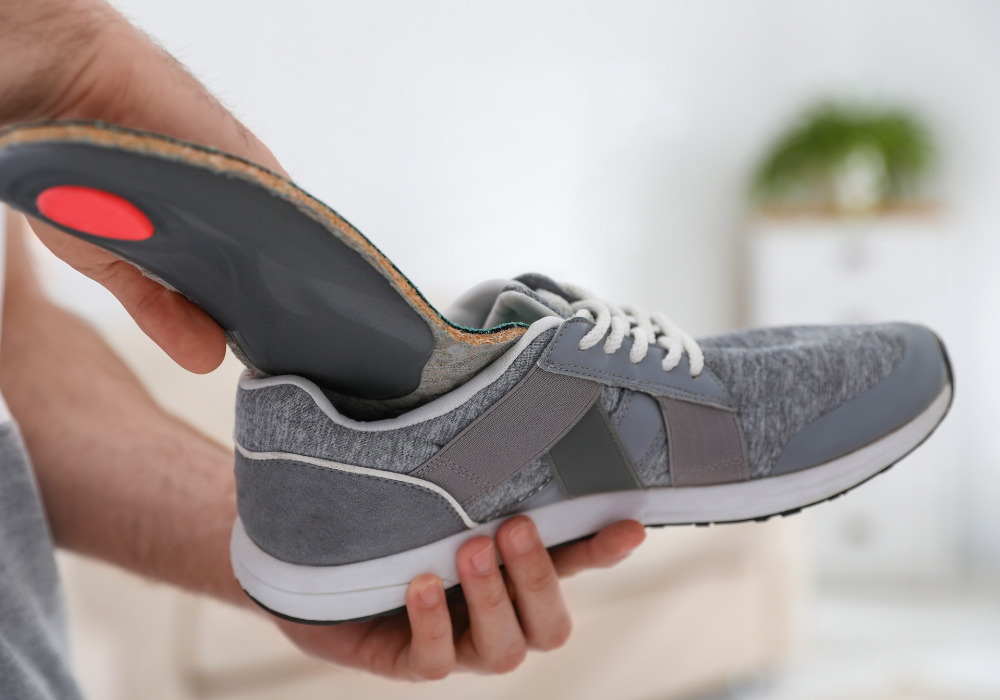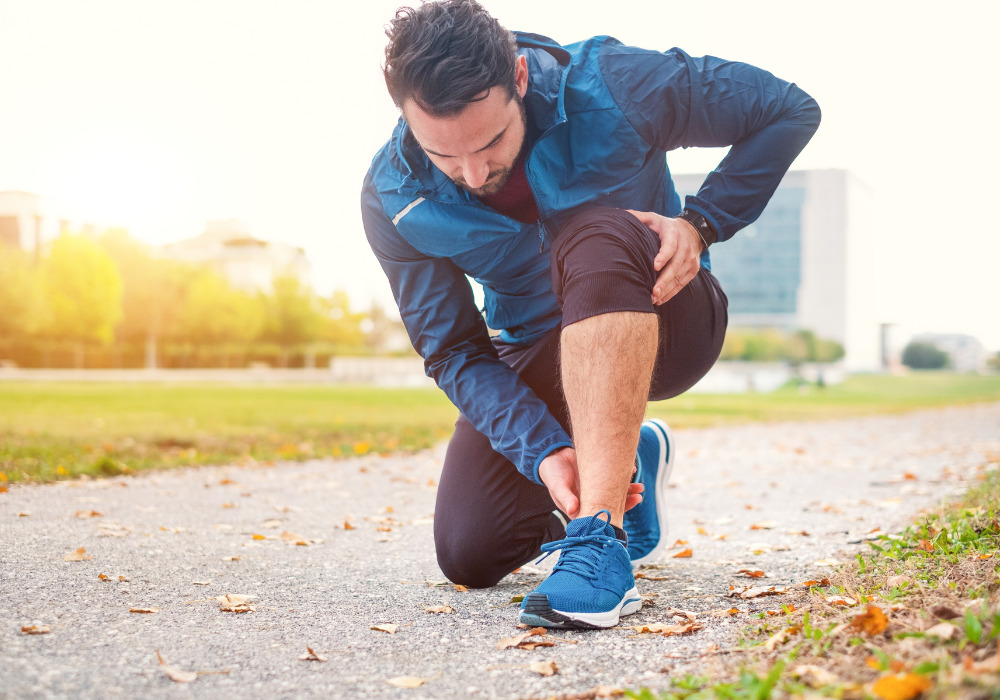As chiropractors, we often see patients who are dealing with foot and ankle pain. While there can be many causes for these issues, one factor that can contribute to pain and discomfort is improper shoe support. In this blog, we will explain why shoe support is so important for overall foot health and offer some tips for choosing the right shoes.
The importance of shoe support
Your feet are the foundation of your body, and they support your weight and absorb shock with each step you take. If your shoes don’t provide adequate support, your feet can become misaligned, leading to pain and discomfort not just in your feet, but also in your ankles, knees, hips, and even your back.
Proper shoe support is particularly important for people with flat feet, high arches, or other foot conditions. These individuals may require specialised shoes that provide additional arch support or cushioning to prevent pain and discomfort.


Tips for choosing the right shoes
When it comes to selecting the right shoes, there are a few things to keep in mind. Here are some tips:
1. Choose shoes with good arch support
The arch of the foot is responsible for absorbing the shock of each step you take. Without proper support, the arch can collapse or flatten, which can lead to pain and discomfort in the feet, ankles, knees, hips, and back.
Having proper arch support can help distribute your weight evenly across your feet, reducing the risk of foot injuries and conditions such as plantar fasciitis, which is a common cause of heel pain.
Individuals with flat feet or high arches may require specialised shoes with additional arch support to prevent pain and discomfort.
Proper arch support can improve your overall posture and alignment, reducing the risk of developing chronic pain or injuries in other parts of the body.
2. Look for shoes with a wide toe box
Choosing shoes with a wide toe box is important for several reasons.
First, it allows your toes to spread out naturally, providing more stability and balance as you walk or run. This can also reduce the risk of developing blisters, corns, and calluses on your toes, which can be caused by shoes that are too tight or constricting.
Second, a narrow toe box can cause your toes to be squished together, which can lead to various foot problems such as hammertoes or bunions. These conditions can be painful and require medical attention to correct.
Finally, a wide toe box provides more room for your foot to move and breathe, which can help prevent foot odour and fungal infections. This is particularly important for athletes or individuals who spend a lot of time on their feet.
3. Choose shoes with a firm heel counter
The heel counter is the back part of the shoe that cups your heel and provides stability and support. A firm heel counter helps prevent your foot from sliding around in the shoe, reducing the risk of blisters and other foot injuries.
A firm heel counter can help improve your gait and posture, which can reduce the risk of injuries in other parts of the body. When your foot is properly supported in the shoe, it allows for more natural movement and reduces the risk of overpronation or supination, which can cause pain and discomfort in the feet, ankles, knees, and back.
A firm heel counter can also help prevent ankle sprains and other injuries by providing additional support to the ankle joint. This is particularly important for athletes or individuals who participate in high-impact activities.
Choosing shoes with a firm heel counter can provide long-lasting durability and support, allowing you to wear your shoes for longer periods without experiencing discomfort or needing to replace them frequently.
4. Avoid high heels
High heels place your foot in an unnatural position, causing your body weight to shift forward onto the balls of your feet. This can put a lot of pressure on your toes, leading to pain, blisters, and calluses.
Wearing high heels can cause the muscles in your calves and feet to become tight and strained, which can lead to foot and leg pain. Over time, this can contribute to the development of conditions such as plantar fasciitis, Achilles tendonitis, and calf strains.
High heels can cause your ankles to become unstable, increasing the risk of ankle sprains and other injuries. This is because the high heel puts your foot at an angle that can cause your ankle to twist or turn unnaturally.
Wearing high heels on a regular basis can contribute to the development of long-term foot problems such as bunions, hammertoes, and corns. These conditions can be painful and may require medical treatment to correct.
5. Replace your shoes regularly
Shoes experience wear and tear over time, which can lead to a loss of support and cushioning. This can cause your feet to become fatigued and increase the risk of foot and leg pain.
As shoes age, they may develop uneven wear patterns, which can cause your feet to become misaligned and increase the risk of developing foot conditions such as plantar fasciitis or Achilles tendonitis.
Replacing shoes regularly can help prevent the buildup of bacteria and fungi, which can cause foot odour and infections. It can also help you stay up-to-date with changes in your foot size and shape. As we age, experience weight changes, or go through pregnancy, our feet can change size and shape, requiring a different shoe size or style.
Proper shoe support is crucial for maintaining good foot health and preventing pain and discomfort. If you’re experiencing foot or ankle pain, be sure to speak with one of our chiropractors who can assess your needs and recommend appropriate footwear and treatment. By taking care of your feet, you’ll be taking care of your entire body.





